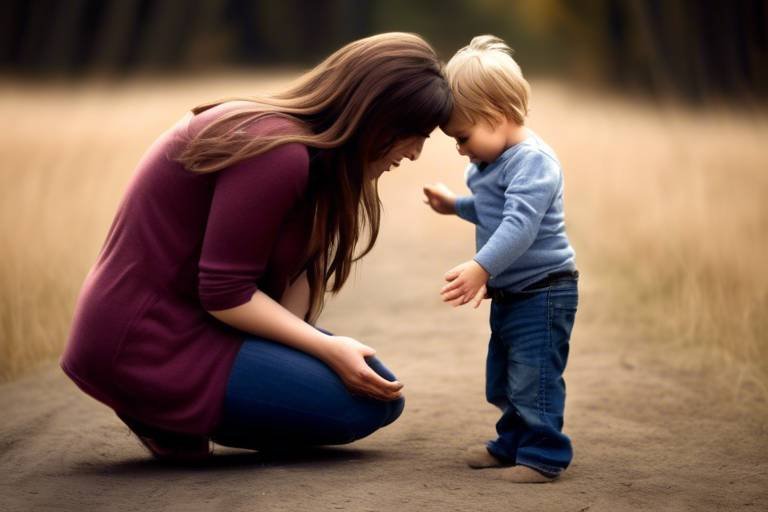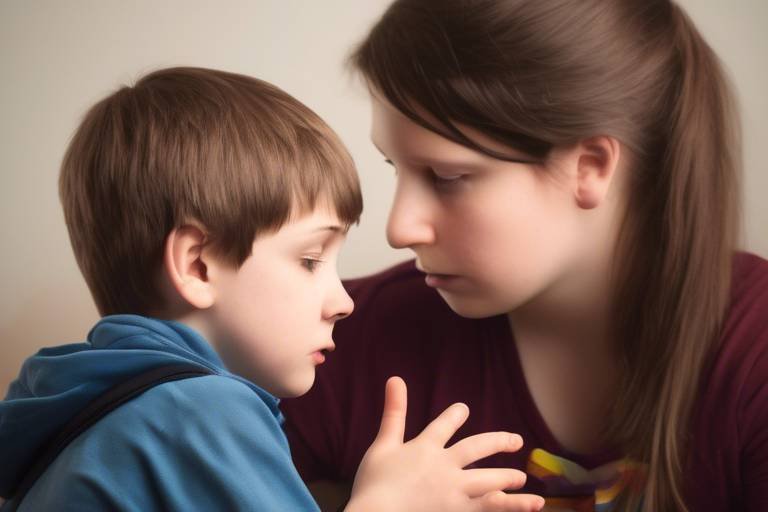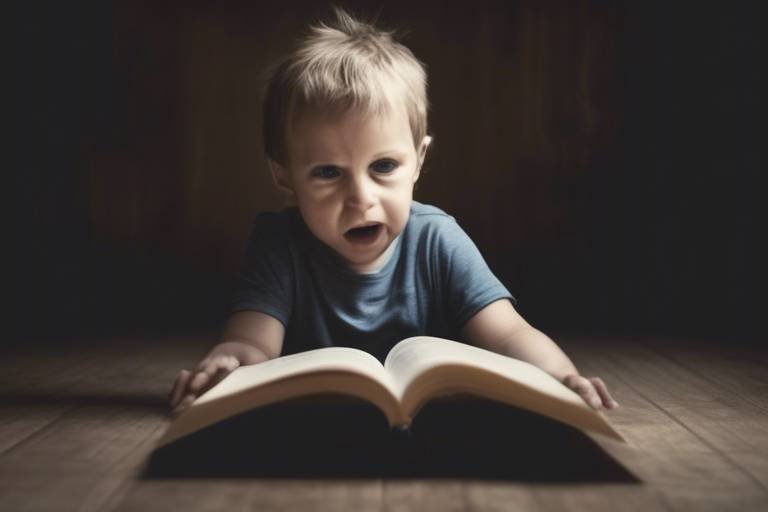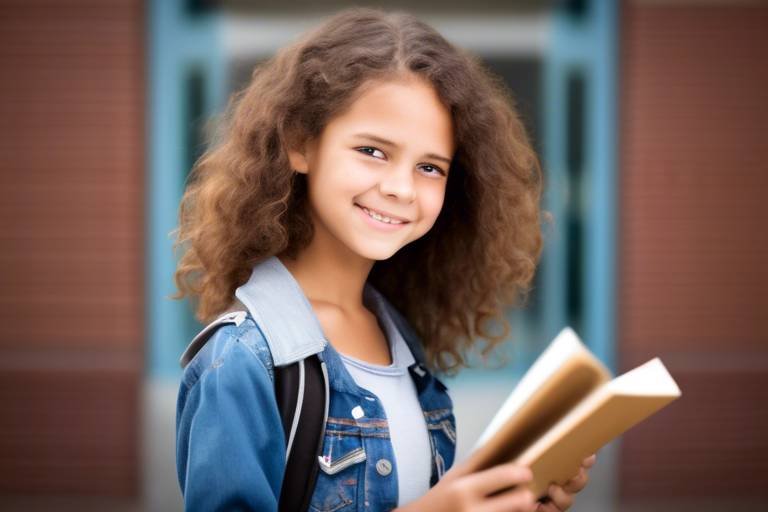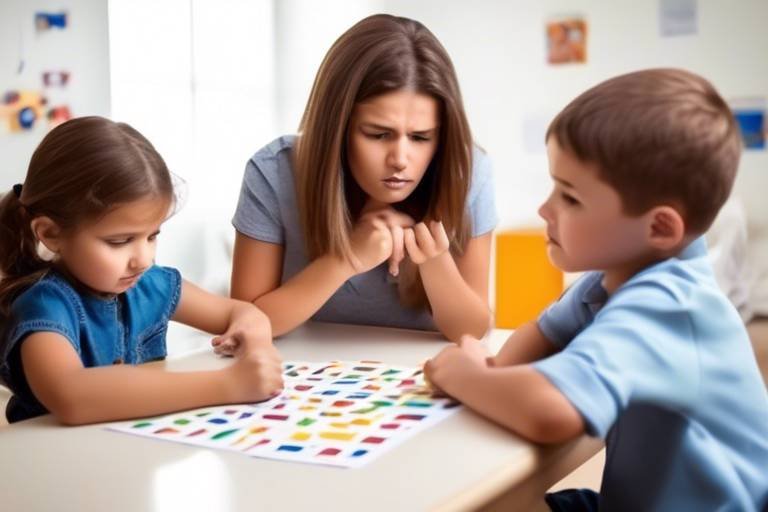Teaching Kids the Importance of Recycling
In our rapidly changing world, teaching children the importance of recycling is not just a nice-to-have; it’s a necessity. Imagine a future where our kids grow up understanding the value of our planet, actively participating in its preservation, and making choices that lead to a healthier environment. This article explores the significance of recycling for children, offering insights into how to educate them about environmental responsibility and sustainable practices from a young age. By instilling these values early on, we can ensure that the next generation inherits a cleaner, greener planet.
Understanding the benefits of recycling helps kids appreciate its role in conserving resources, reducing waste, and protecting the environment. When children learn about recycling, they begin to see the world differently. They realize that every bottle, can, and piece of paper can have a second life. For instance, did you know that recycling just one aluminum can saves enough energy to power a TV for three hours? This kind of knowledge fosters a sense of responsibility towards their planet, making them feel like they are part of something much bigger. It's not just about throwing things in the right bin; it's about being a steward of the Earth.
Engaging activities and games can make learning about recycling enjoyable for kids, encouraging them to participate actively in eco-friendly practices through hands-on experiences. Think about it: when learning is fun, kids are more likely to remember the lessons. From interactive games to crafting projects, there are countless ways to make recycling an exciting adventure. For example, you could set up a scavenger hunt where kids find recyclable items around the house or neighborhood. This not only teaches them what can be recycled but also gets them moving and exploring!
Games that involve sorting recyclable materials can help children grasp the concept of recycling while having fun. Imagine a colorful game where kids race against the clock to sort items into the correct bins. This not only reinforces their understanding of what is recyclable but also instills teamwork and collaboration. It’s like turning a mundane task into an Olympic event! Plus, when kids work together, they learn the importance of community efforts in protecting our environment.
Creating friendly competitions among kids can motivate them to recycle more, promoting teamwork and a sense of accomplishment as they work towards a common goal. You could set up a monthly challenge where each child tracks the number of items they recycle, with a small prize for the most dedicated recycler. This not only makes recycling exciting but also instills a sense of pride in their efforts. After all, who doesn’t love a little friendly competition?
Using recyclable materials for arts and crafts projects allows kids to unleash their creativity while learning about the importance of reusing items instead of discarding them. Picture this: a rainy afternoon spent transforming old newspapers into beautiful paper mache sculptures or turning glass jars into colorful lanterns. Not only does this spark creativity, but it also teaches kids that trash can be transformed into treasures. Every time they see their creations, they'll be reminded of the value of recycling.
Books, videos, and online resources tailored for children can provide valuable information about recycling, making learning accessible and engaging for young minds. Resources like animated videos or interactive websites can capture their attention and make complex concepts easy to understand. Consider reading a story about a character who learns the importance of recycling, or watching a fun video that explains how recycling works. These resources can be excellent conversation starters, encouraging kids to ask questions and explore further.
Establishing a recycling routine at home can create a lasting habit in children, teaching them the importance of consistent eco-friendly practices in their daily lives. Just like brushing their teeth or making their beds, recycling can become a natural part of their daily routine. When kids see adults actively participating in recycling, they are more likely to follow suit. It’s about creating an environment where recycling is not just encouraged but celebrated!
Creating a designated recycling area at home helps kids understand where to place recyclable items, making it easier for them to participate in the recycling process. A colorful, clearly labeled recycling station in your kitchen or garage can serve as a visual reminder for the whole family. You might even involve your kids in the setup process, allowing them to decorate the bins or create fun labels. This hands-on approach will make them feel invested in the recycling effort.
Encouraging family involvement in recycling initiatives fosters a collaborative environment, allowing children to learn from adults while reinforcing the importance of collective responsibility towards the environment. Family recycling days can be a fun way to spend time together while also teaching important lessons. Whether it's a trip to the recycling center or a community clean-up event, these shared experiences can strengthen family bonds and instill a deeper understanding of environmental stewardship in children.
Q: At what age should I start teaching my child about recycling?
A: You can start introducing the concept of recycling as early as preschool age. Simple explanations and engaging activities can help even the youngest children understand its importance.
Q: How can I make recycling fun for my kids?
A: Incorporate games, challenges, and creative projects using recyclable materials. The more interactive and hands-on the learning experience, the better!
Q: What are some common recyclable items?
A: Common recyclable items include paper, cardboard, glass bottles, aluminum cans, and certain plastics. Make sure to check local recycling guidelines as they can vary.
Q: How can I involve my child in our family recycling routine?
A: Involve them in setting up the recycling station, sorting items, and even taking trips to the recycling center. Making it a family effort reinforces the importance of teamwork in environmental care.

The Benefits of Recycling
Understanding the benefits of recycling is crucial for children as it helps them appreciate its vital role in conserving resources, reducing waste, and protecting our environment. When kids grasp the concept of recycling, they begin to develop a sense of responsibility towards their planet, which is an invaluable lesson for their future. Imagine teaching them that by simply sorting their trash, they can make a significant impact on the world around them! It's like giving them the power to be superheroes for the environment.
One of the most significant benefits of recycling is resource conservation. For instance, did you know that recycling just one ton of paper can save over 17 trees? That’s a big deal! By teaching kids to recycle, we are instilling in them the knowledge that their small actions can lead to substantial environmental benefits. This understanding encourages them to think critically about the materials they use and the waste they produce, promoting a sustainable mindset.
Moreover, recycling plays a significant role in reducing waste that ends up in landfills. When children learn that landfills are overflowing and that many materials can be reused or repurposed, it opens their eyes to the reality of waste management. For example, plastic bottles can be transformed into clothing or furniture, and aluminum cans can be recycled indefinitely without losing quality. This knowledge can spark their curiosity and inspire them to come up with creative ideas to reduce waste in their own lives.
Additionally, recycling contributes to energy conservation. Producing new products from raw materials often requires a lot of energy, which can lead to increased pollution and greenhouse gas emissions. In contrast, recycling typically uses less energy. For instance, recycling aluminum saves about 95% of the energy required to create new aluminum from raw materials. By illustrating these facts to children, we can help them understand that recycling isn't just about separating items; it's about making smarter choices that benefit our planet.
To further emphasize the importance of recycling, here’s a quick overview of some key benefits:
- Conserves Natural Resources: Reduces the need for extracting new raw materials.
- Reduces Waste: Less waste in landfills means a cleaner environment.
- Saves Energy: Recycling typically uses less energy than producing new products.
- Protects Ecosystems: Less waste means less disruption to natural habitats.
By instilling these values in children, we are not just teaching them about recycling; we are nurturing a generation that values sustainability and environmental stewardship. The benefits of recycling extend beyond just the act itself; it’s about creating a mindset that prioritizes the health of our planet for years to come.

Fun Ways to Teach Recycling
Teaching kids about recycling doesn't have to be a mundane task; in fact, it can be a thrilling adventure! Imagine turning the recycling process into a fun game that not only engages children but also teaches them the importance of taking care of our planet. By incorporating interactive activities into your teaching methods, you can spark a genuine interest in recycling and environmental responsibility. One of the most effective ways to do this is through hands-on experiences that make learning enjoyable. After all, when kids are having fun, they are more likely to remember the lessons they learn!
One fantastic way to get started is by organizing interactive recycling games. These games can involve sorting different types of recyclable materials, where kids can compete to see who can correctly identify and categorize items the fastest. This not only helps them grasp the concept of recycling but also fosters teamwork and communication skills. Imagine a scenario where children race against the clock to sort plastic bottles, paper, and cans into their respective bins. The excitement of the competition combined with the satisfaction of doing something good for the environment creates a memorable learning experience.
Another engaging method is to introduce recycling challenges. Create friendly competitions among kids, where they can track how many recyclable items they collect over a week or a month. You can set up a leaderboard to keep the motivation high! Not only does this promote teamwork, but it also instills a sense of accomplishment as they work towards a common goal. Plus, you can reward the winners with fun eco-friendly prizes, like reusable water bottles or plant kits, making the experience even more rewarding.
And let’s not forget about the creative side of recycling! Encourage kids to unleash their inner artists by using recyclable materials for crafting projects. This can be anything from turning old newspapers into paper mache sculptures to using empty plastic bottles for DIY bird feeders. Not only does this teach kids about reusing items, but it also allows them to see the potential in things that would otherwise be thrown away. The joy of creating something new from what was once considered trash can be incredibly empowering for young minds.
To further enhance the learning experience, consider incorporating educational resources tailored specifically for children. Books, videos, and online resources can provide valuable information about recycling in an engaging way. For instance, you could watch a fun animated video that explains the recycling process, followed by a discussion about what they learned. This multi-faceted approach helps reinforce their understanding and keeps the topic fresh and exciting.
In conclusion, making recycling fun is all about creativity and engagement. By incorporating games, challenges, crafting, and educational resources into your teaching methods, you can inspire a lifelong commitment to environmental responsibility in children. So, are you ready to turn recycling into an exciting adventure for your kids? The planet will thank you for it!
Q: How can I make recycling fun for my kids?
A: You can organize interactive games, set up recycling challenges, and incorporate crafting projects using recyclable materials to make learning about recycling enjoyable.
Q: What are some examples of recycling games?
A: Examples include sorting competitions where kids categorize recyclable items, scavenger hunts for recyclable materials, or creating a recycling-themed board game.
Q: How can I involve the whole family in recycling?
A: Encourage family participation by setting collective goals, creating a recycling routine at home, and celebrating achievements together.

Interactive Recycling Games
When it comes to teaching kids about recycling, interactive games can be a game-changer—pun intended! These activities not only make learning fun but also allow children to grasp the concept of recycling in a hands-on way. Imagine a group of kids, giggling and chatting as they sort through a pile of materials, each one excited to see who can recycle the most items correctly. This vibrant scene is not just entertaining; it’s a powerful way to instill a sense of responsibility towards the environment.
One popular game is the Recycling Relay Race. In this game, children are divided into teams and given a mix of recyclable and non-recyclable items. The objective? To race against time and sort as many items correctly as possible. Not only does this game promote teamwork, but it also reinforces the importance of identifying what can and cannot be recycled. Picture the thrill as they dash back and forth, cheering each other on, all while learning about waste management!
Another engaging activity is the Recycling Scavenger Hunt. This game encourages kids to find specific recyclable items around the house or yard. Parents can create a checklist of items such as plastic bottles, cardboard boxes, or aluminum cans. As children search for these items, they learn to recognize recyclables in their everyday environment. Plus, the excitement of a scavenger hunt keeps them motivated and eager to learn.
To further enhance the learning experience, consider incorporating educational discussions after each game. For example, after the Recycling Relay Race, gather the kids and talk about why certain items are recyclable and others are not. This reflection helps solidify their understanding and encourages them to ask questions. You could even create a
| Recyclable Items | Non-Recyclable Items |
|---|---|
| Plastic bottles | Pizza boxes |
| Aluminum cans | Plastic utensils |
| Cardboard boxes | Foam containers |
| Glass jars | Mirrors |
By using these interactive games, children not only learn about recycling but also develop critical thinking and teamwork skills. They’ll remember the fun they had sorting items and the excitement of finding recyclables, which makes the lessons stick. So, why not turn the learning process into a joyful adventure? With a little creativity and enthusiasm, you can inspire the next generation to take care of our planet, one game at a time!
Q: How can I make recycling fun for my kids?
A: Incorporate games like Recycling Relay Races or Scavenger Hunts to engage them actively in the learning process.
Q: What age is appropriate to start teaching kids about recycling?
A: You can start introducing the concept as early as preschool age, using simple terms and engaging activities.
Q: Are there resources available to help teach kids about recycling?
A: Yes! There are many books, videos, and online resources specifically designed for children to learn about recycling in an engaging way.

Recycling Challenges
Creating friendly competitions among kids can be a fantastic way to motivate them to recycle more effectively. Think about it: when you turn something into a game, it transforms the mundane into something exciting! By introducing recycling challenges, you not only instill the importance of recycling but also foster teamwork and a sense of accomplishment. Imagine a scenario where kids compete to see who can collect the most recyclable items in a week. Not only does this encourage them to be more observant about waste, but it also gets them involved in their community as they might even ask neighbors for their recyclables.
To make it even more engaging, you could set up a point system. For example, each type of recyclable could have a different point value. Here’s a simple breakdown:
| Recyclable Item | Points |
|---|---|
| Plastic Bottles | 5 |
| Cans | 3 |
| Paper | 2 |
| Cardboard | 4 |
With this point system, children can not only see their efforts quantified but also learn about the different materials and their impact on the environment. You could even reward the top recyclers with small prizes or certificates, further encouraging their participation. The key is to keep it light-hearted and fun while driving home the message that every little bit helps!
Additionally, you can enhance these challenges by incorporating themes or specific goals. For instance, one week could focus on plastic waste, while another might emphasize paper products. By varying the focus, you can keep the kids engaged and continually learning about the different aspects of recycling. To make it even more interesting, you could have a "recycling week" where the entire family participates, making it a community effort. This not only strengthens family bonds but also reinforces the idea that recycling is a collective responsibility.
In conclusion, recycling challenges can turn a simple act of sorting trash into an exciting adventure. By fostering a competitive spirit and promoting teamwork, you can help children embrace recycling as a regular part of their lives. It's a win-win situation: kids learn about the importance of sustainability while also having a blast!
- What age should I start teaching my kids about recycling? It's never too early! Start introducing the concepts as soon as they can understand basic instructions, usually around age 3-4.
- How can I make recycling more fun for my kids? Engage them with games, challenges, and creative projects using recyclables.
- What are some common items that can be recycled? Common recyclables include paper, cardboard, plastic bottles, and aluminum cans.
- How can I encourage my kids to remember to recycle? Establish a routine and create a designated recycling station at home, making it easy for them to participate.

Crafting with Recyclables
Crafting with recyclables is not just a fun activity; it’s a fantastic way for children to learn about sustainability while unleashing their creativity. Imagine turning an old cereal box into a beautiful bird feeder or transforming plastic bottles into colorful planters! These projects not only provide a hands-on approach to understanding the importance of reusing materials but also allow kids to express themselves artistically. When kids engage in crafting with recyclables, they begin to see the potential in what might otherwise be considered waste. This shift in perception is crucial in fostering a lifelong commitment to environmental responsibility.
One of the most exciting aspects of crafting with recyclables is the **endless possibilities** it offers. Children can create a variety of projects using materials that would typically end up in the trash. Here are some popular ideas that can inspire young crafters:
- Cardboard Box Forts: Kids can use large boxes to build forts, playhouses, or even spaceships, encouraging imaginative play.
- Plastic Bottle Planters: By cutting and decorating plastic bottles, children can create unique planters for their favorite flowers or herbs.
- Egg Carton Critters: Old egg cartons can be transformed into fun animals or characters, sparking creativity and storytelling.
Not only does crafting with recyclables promote creativity, but it also teaches kids valuable skills. They learn to follow instructions, use tools safely, and even work collaboratively when they involve friends or siblings in their projects. Additionally, these activities can lead to discussions about the environmental impact of waste and the importance of recycling, reinforcing the lessons learned.
To make the crafting experience even more enriching, parents and educators can organize workshops or community events where children can showcase their creations. This not only boosts their confidence but also emphasizes the idea that everyone can contribute to a healthier planet through creativity and resourcefulness.
Q: What types of materials can we use for crafting?
A: You can use a wide variety of recyclable materials such as cardboard, paper, plastic bottles, egg cartons, and tin cans. Just make sure to clean them before use!
Q: How do I encourage my child to start crafting with recyclables?
A: Start by involving them in sorting recyclables at home and then suggest fun project ideas. You can also set up a crafting station with supplies ready to go!
Q: Are there any safety concerns when crafting with recyclables?
A: Yes, always supervise young children when using scissors or other tools. Make sure to use child-safe materials and avoid sharp edges.
Q: Can crafting with recyclables really make a difference?
A: Absolutely! It helps reduce waste, promotes creativity, and teaches children the value of sustainability, which can have a lasting impact on their habits and values.

Educational Resources for Kids
When it comes to teaching kids about recycling, having the right resources can make all the difference. Imagine diving into a treasure chest filled with colorful books, engaging videos, and interactive online platforms that not only inform but also entertain. These resources can transform recycling from a mundane task into an exciting adventure! For instance, consider introducing your child to storybooks that weave tales about the environment and the significance of recycling. Books like "The Lorax" by Dr. Seuss not only entertain but also impart crucial lessons about taking care of our planet.
Moreover, there are fantastic educational videos available on platforms like YouTube. Channels dedicated to environmental education often feature fun animations and catchy songs that can help children grasp the importance of recycling in a way that resonates with them. Watching these videos together can spark lively discussions about what they learned, making the experience even more impactful.
In addition to books and videos, there are numerous interactive websites designed specifically for kids. Websites such as National Geographic Kids or PBS Kids offer games, quizzes, and activities that make learning about recycling engaging and fun. These platforms allow children to explore the topic at their own pace, encouraging them to ask questions and seek answers.
To further enrich your child's learning experience, consider organizing a recycling scavenger hunt at home. Create a list of recyclable items and challenge your kids to find them around the house. This hands-on activity not only reinforces what they’ve learned but also adds an element of excitement and competition. By combining various educational resources, you can create a comprehensive learning experience that instills a profound understanding of recycling and its importance in nurturing our planet.
- What age is appropriate to start teaching kids about recycling? It's never too early! Even toddlers can begin to understand basic concepts of recycling through simple explanations and engaging activities.
- How can I make recycling fun for my kids? Incorporate games, crafts, and interactive resources. Activities like creating art from recyclables or scavenger hunts can make the learning process enjoyable.
- Are there specific books you recommend for teaching recycling? Yes! Titles like "The Lorax" and "Michael Recycle" are excellent choices that introduce recycling concepts in a fun and relatable way.
- How can I involve my family in recycling efforts? Set up a family recycling challenge or designate a day for everyone to clean and sort recyclables together. This promotes teamwork and reinforces the importance of collective responsibility.

Building a Recycling Routine at Home
Establishing a recycling routine at home is not just about sorting trash; it's about creating a lifestyle that emphasizes sustainability and environmental responsibility. When children see their parents actively participating in recycling, it sends a powerful message about the importance of this practice. Imagine your home as a mini-ecosystem where every family member plays a vital role in conserving resources and protecting our planet. By integrating recycling into daily activities, you can help children develop habits that last a lifetime.
To kickstart this journey, it’s essential to create a designated recycling station in your home. Think of it as a command center for eco-friendliness! This station can be a simple setup in the kitchen, garage, or even a corner of the living room. Use clearly labeled bins for different materials—paper, plastics, metals, and glass. When children know exactly where to put their recyclable items, they feel empowered to take action. You could even decorate the bins together, making it a fun family project that sparks excitement about recycling.
Involving the entire family in recycling initiatives is another key aspect. When everyone participates, it fosters a collaborative environment that reinforces the idea of collective responsibility. Have regular family meetings to discuss recycling goals and achievements. For instance, you could set a target to recycle a certain number of items each week. This not only makes recycling a shared mission but also allows for moments of celebration when you reach your goals. Imagine the joy on your children's faces when they realize they’ve contributed to a cleaner planet!
Another great way to build a recycling routine is by turning it into a game. Kids love challenges, so why not create a fun competition? Track how many items each family member recycles in a week and reward the “Recycling Champion” with a small prize. This not only makes recycling enjoyable but also instills a sense of accomplishment in your children. They’ll learn that their efforts matter, and they’ll be more likely to continue these practices as they grow older.
Moreover, consider incorporating recycling into your family outings. For example, when you go to the park or beach, bring along a bag for collecting recyclables. This not only reinforces the habit but also shows children the impact of litter on the environment. It’s an opportunity to have meaningful conversations about wildlife and habitats, making the topic of recycling even more relevant. By connecting recycling to real-world experiences, you help children understand its significance in a tangible way.
In conclusion, building a recycling routine at home is about more than just bins and bottles; it’s about instilling values that will shape future generations. By creating a designated recycling station, involving the family, and turning recycling into a fun activity, you can make a significant impact. Remember, every small action counts, and when children see their parents leading by example, they are more likely to adopt these eco-friendly habits for life. So, let’s get started on this exciting journey towards a more sustainable future!
- Why is recycling important for kids? Recycling teaches children the value of resources and the importance of protecting the environment. It instills a sense of responsibility and encourages sustainable practices from a young age.
- How can I make recycling fun for my kids? Engage them in interactive games, competitions, and creative projects using recyclable materials. The more fun they have, the more likely they are to participate actively!
- What should I include in a recycling station at home? Include clearly labeled bins for paper, plastics, metals, and glass. You can also add a small area for composting organic waste if you're interested in that as well.
- How can I involve the whole family in recycling? Organize family meetings, set recycling goals, and celebrate achievements together. You can also create friendly competitions to motivate everyone.

Setting Up a Recycling Station
Creating a designated recycling station in your home is a fantastic way to teach kids about recycling and environmental responsibility. Imagine it as a mini command center for eco-friendly practices! Start by choosing a convenient location, like the kitchen or garage, where everyone can easily access it. This station should be visually appealing and organized, making it inviting for your little ones to engage with. You can use colorful bins or containers to differentiate between various types of recyclables. For instance, one bin can be for paper, another for plastics, and a third for metals. This not only simplifies the sorting process but also makes it a fun and interactive experience for kids.
Next, involve your children in the setup process. Let them decorate the bins with stickers or labels that indicate what goes where. This hands-on activity not only makes them feel invested in the recycling station but also reinforces their understanding of what materials are recyclable. You can even create a simple chart that outlines what can be recycled, which can be hung nearby for easy reference. This chart can serve as a quick guide, helping to eliminate confusion and ensuring that everyone in the family is on the same page.
Once your recycling station is up and running, you can turn it into a daily routine. Encourage your kids to sort their recyclables right after meals or when they finish a craft project. This habit will help them see recycling as a natural part of their daily life rather than an occasional chore. To make it even more exciting, consider setting small goals or challenges. For example, track how many items each family member recycles in a week, and celebrate the achievements together. You could even reward the most enthusiastic recycler with a small prize or treat!
Additionally, it's important to regularly maintain and clean the recycling station. Make it a family event to check the bins weekly, ensuring they are not overflowing and that everything is sorted correctly. This not only keeps the area tidy but also reinforces the idea that recycling is an ongoing commitment. Over time, your children will develop a sense of pride in their efforts, understanding that their actions contribute to a healthier planet.
In conclusion, setting up a recycling station is more than just placing bins in your home; it's about creating a culture of sustainability. By involving your kids in the process and making it enjoyable, you are instilling values that will last a lifetime. They will grow up understanding the importance of recycling and the impact it has on our environment, ensuring they become responsible stewards of the planet.
Q1: What materials can be recycled?
A1: Common recyclable materials include paper, cardboard, glass, plastics (check for recycling symbols), and metals like aluminum cans. Always check local recycling guidelines, as they can vary.
Q2: How can I motivate my child to recycle?
A2: Make recycling fun! Set up a colorful recycling station, involve them in the process, and create games or challenges around recycling to keep them engaged.
Q3: What if my child forgets to recycle?
A3: Remind them gently and make it a routine. Consistency is key! Celebrate small successes to encourage them to keep trying.
Q4: Can recycling really make a difference?
A4: Absolutely! Recycling conserves natural resources, reduces waste in landfills, and decreases pollution. Every little bit helps, and teaching kids about this early on is crucial.

Involving the Family
Getting the whole family involved in recycling can be a game-changer when it comes to teaching kids about environmental responsibility. Think of it like a team sport; when everyone plays their part, the results are not only more effective but also a lot more fun! By engaging in recycling initiatives together, families can create a strong foundation for eco-friendly habits that children will carry into adulthood. Imagine sitting down as a family to discuss how to reduce waste; it’s a great opportunity for bonding and learning.
One of the best ways to start is by having regular family meetings focused on sustainability. During these sessions, you can brainstorm ways to improve your recycling efforts, like how to reduce plastic use or what items can be composted. This not only educates your kids but also gives them a sense of ownership in the process. Kids love to feel like they are making a difference, and when they see their ideas being put into action, it boosts their confidence and enthusiasm.
Another effective strategy is to turn recycling into a family challenge. For instance, you could set a goal to recycle a certain amount of materials each week. Make it exciting by tracking your progress on a chart. You could even reward the family with a fun outing or a special treat once you hit your target! This turns a mundane task into an engaging activity that everyone looks forward to. Plus, it reinforces the idea that working together can lead to great achievements.
It’s also beneficial to involve children in the decision-making process regarding what items to recycle. Take them on a scavenger hunt around the house to identify recyclable materials. This hands-on approach not only teaches them about recycling but also helps them develop critical thinking skills as they evaluate what can be reused or repurposed. For example, can that old cereal box become a storage container? Can empty glass jars be used for arts and crafts? The possibilities are endless!
In addition to these activities, consider creating a fun family recycling song or chant. This might sound silly, but music is a powerful tool for learning. Kids are more likely to remember the importance of recycling if they associate it with something enjoyable. You could even make a family video showcasing your recycling efforts, which can be shared with friends and extended family to spread the eco-friendly message further.
Involving the family not only makes recycling a shared responsibility but also fosters a sense of community and teamwork. It transforms the act of recycling from a chore into a fun, collaborative effort that everyone can participate in. When kids see their parents actively engaged in eco-friendly practices, they are more likely to adopt these behaviors themselves. So, roll up your sleeves, gather your family, and start making a difference together!
- Why is family involvement important in teaching kids about recycling?
Family involvement reinforces the importance of recycling and helps children understand that it is a shared responsibility. It also creates a supportive environment where kids feel encouraged to participate. - What are some fun activities to involve the family in recycling?
Activities like family recycling challenges, scavenger hunts for recyclable materials, and crafting projects using recyclables can make learning about recycling enjoyable. - How can we track our recycling progress as a family?
Creating a chart or using a mobile app to track the amount of recycled materials can be motivating. Celebrating milestones with rewards can further encourage participation.
Frequently Asked Questions
- Why is recycling important for kids?
Recycling is crucial for kids because it teaches them about environmental responsibility. By understanding the impact of waste on our planet, children can develop a sense of stewardship and learn to make eco-friendly choices that benefit future generations.
- How can I make recycling fun for my children?
You can make recycling fun by incorporating interactive games and challenges. For example, sorting recyclable materials can be turned into a competitive game, or you could organize crafting sessions using recyclables. This hands-on approach keeps kids engaged and excited about recycling.
- What are some effective educational resources on recycling for kids?
There are numerous resources available that cater specifically to children. Look for engaging books, informative videos, and interactive online platforms that explain recycling in a fun and relatable way. These resources can help reinforce the concepts of recycling and environmental care.
- How can I set up a recycling routine at home?
Establishing a recycling routine at home can be simple. Start by creating a designated recycling station where kids can easily sort their recyclables. Encourage them to participate regularly, and make it a family activity to foster a sense of community and shared responsibility.
- What role does family involvement play in teaching kids about recycling?
Family involvement is key to teaching kids about recycling. When parents and siblings participate together, it reinforces the importance of recycling as a collective effort. This shared experience not only strengthens family bonds but also instills lasting eco-friendly habits in children.


